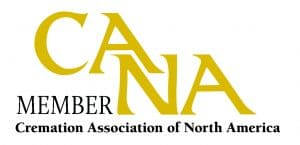What exactly is Aquamation?
Aquamation essentially does exactly what it says on the tin. It is a method of disposition that uses water to dispose of a body in place of fire, as with a flame cremation. This eliminates the use of gas and the omissions cremation produces.
For this reason, it is deemed a more natural, ethical, and environmentally friendly alternative to cremation or burial. It is also referred to as water cremation, hydro cremation, or bio cremation.
Why is aquamation or resomation considered ‘green’?
As mentioned above, cremation creates omissions and uses significant energy in the process, whereas aquamation uses a natural process called alkaline hydrolysis. In fact, Aquamation uses just 10% of the energy used during a cremation process, and there are NO air emissions. No organic matter can be discharged from cremation chimneys, and no methane gas or toxic chemicals can leak from a burial casket and seep into the water table.
Aquamation’s carbon footprint is almost seven times lower than that of cremation!
For these reasons, Aquamation has been proclaimed as the new, truly environmentally friendly alternative to cremation or burial! It is likely that we will witness a significant growth in water cremation in the coming years. It is becoming more accepted as a ‘greener’ alternative to flame cremation. However, aquamation is currently only legal in a few provinces in Canada.
Church teaching about the dignity of the human body and how we are supposed to show reverence for human remains calls into question the method of disposal in alkaline hydrolysis.
But in truth, if flame cremation is accepted, then water cremation should be just as acceptable. In both processes, the body is reduced to some form of ground bone ash remains.
How does aquamation or resomation work?
The deceased body is placed in a clean, stainless steel vessel, and water, heat, and alkalinity are gently applied to accelerate a natural process of tissue hydrolysis. The method uses a solution of 95% water and 5% potassium hydroxide or sodium hydroxide. This process reduces the organic matter of the body to the base components of liquid and bone.
Our bodies are actually 70% water, so this natural process simply returns us to a natural form and a natural component of our universe – h2O. Some solid bones remain, but these are generally ground to provide ashes if required. And the water is returned to the earth, where it makes a great natural fertilizer!
How does Aquamation affect the funeral ritual?
The traditional funeral ritual can remain the same. A funeral ceremony can still be conducted if so desired, as with a flame cremation. The casket, or coffin, can be viewed and once the curtains have been closed, the aquamation process can be performed. The ashes that result from the process can be returned to the family in a suitable container if desired.

How did aquamation or resomation come into being as a disposition method?
Alkaline hydrolysis was first developed in the 19th century for use by the farming industry as a method of handling animal remains that is natural, safe, and environmentally sound. It was later introduced by a prominent medical research establishment – the MAYO Clinic, and in 2008, the UK Cremation Society voted to change its constitution to allow it to support aquamation, as they viewed it as a superior means of disposal.
It is still in limited use within the funeral industry, although it is predicted that this with change dramatically within the next decade. It is currently only allowed in three provinces, and funeral homes offering the resomation process can often be criticized by an industry resisting change.
For a process that is environmentally friendly in many ways, that fits with most religious and faith philosophy, we should surely be bringing aquamation or resomation into the mainstream and making it accessible for all those who would prefer this as a ‘green’ funeral alternative to flame cremation or burial.
Which provinces allow water cremation?
Alkaline hydrolysis, otherwise referred to as Bio cremation, Aquamation, or resomation, is now legal in Saskatchewan, Ontario, Quebec, Newfoundland and Labrador, and the Northwest Territories as of 2024.
However, it is likely that it will be legalized in other provinces in the near future as it is growing in popularity in the provinces where it is legal. For example, many people in British Columbia are advocating for the legalization of Aquamation, especially considering that according to Statistics Canada and the B.C. government, cremation released over 10 million kilograms of carbon dioxide in the province in 2017.
What is the cost of Aquamation?
On average, alkaline hydrolysis will start at $2,000 to $5,000. While this fee is higher than traditional flame cremation, it is still a lot less than a traditional burial. Aquamation can cost as little as $1,295 with some funeral homes, making it an affordable and eco-friendly alternative to a simple cremation.
Is aquamation cheaper than cremation?
As mentioned above, it can prove a cheaper option than cremation in some cases, although it will generally cost more than a simple flame cremation. However, it is kinder to the environment and provides a greener disposition solution, so it could become the new cremation trend in years to come. This could especially be the case as gas prices continue to increase.
How do I find a funeral home that offers a water cremation service?
Unfortunately, it is not that easy to quickly find a funeral service location that offers bio cremation. A select few funeral homes promote aquamation on their websites, but overall it is difficult to ascertain a directory of green aquamation providers.
What other benefits can be gained from water cremation?
A huge benefit of aquamation compared to flame cremation is the potential to recover and recycle medical implants. An aquamation can go ahead without the removal of medical implants, and they are largely recoverable intact after the process.
Medical implants such as pacemakers must be removed before a flame cremation as they can combust and explode during the high heat of the cremation process.
Other medical implants, such as metal pins, artificial hips, and cosmetic implants, are not damaged during water cremation and can be recycled to benefit future recipients. This is a significant plus for the healthcare industry in being able to offer recycled medical implants at a reduced cost.
The video below ‘Leaving Earth the Greenest Way Possible: Water Cremation’ gives a great overview of the process and benefits of Bio Cremation.
Visit our comprehensive guide to Green Burial in Canada for more information on greener alternatives to flame cremation.

